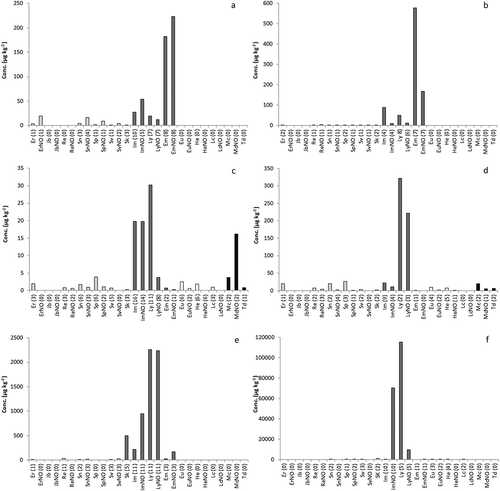Figures & data
Figure 1. PAs consist of a necine base that can have an: (a) retronecine, (b) retronecine N-oxide, (c) heliotridine, (d) heliotrine N-oxide, or (e) otonecine structure. Each necine base is coupled with a necic acid to form four major groups of PAs: (f) a 12-ring macrocyclic diester (e.g. senecionine), (g) an open-chained monoester (e.g. lycopsamine), (h) an open-chained diester (e.g. lasiocarpine), or (i) an 11-ring membered macrocyclic diester (e.g. monocrotaline). Senkirkine, the most prominent representative of the otonecine type, is not shown in this figure, but is generally grouped with the 12-ring macrocyclic diester PAs.
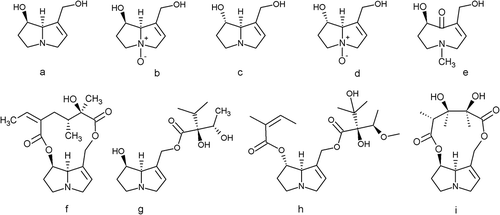
Table 1. Mass spectrometric conditions (positive ESI) used for the analysis of PAs in animal-derived food products.
Table 2. Mass spectrometric conditions (positive ESI) used for the analysis of PAs in tea infusion and supplements.
Table 3. Overview of samples analysed and results obtained for PA in animal- and plant-derived food products.
Figure 2. Mean concentration of PAs extracted from dry tea when preparing tea infusion with near-boiling water (light grey) and with aqueous sulphuric acid at room temperature (dark grey). A set of 38 samples differing in PA composition and concentration was analysed. Between brackets, the number of samples containing the PA.
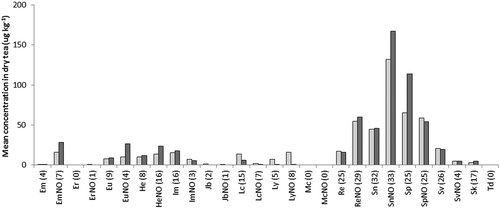
Figure 3. Mean concentrations of individual PAs in: (a) black tea (n = 33), (b) green tea (n = 26), (c) rooibos tea (n = 22), (d) camomile tea (n = 35), (e) peppermint tea (n = 35), and (f) mixed herbs (n = 22), The PAs are grouped into four categories: senecionine type (light grey), lycopsamine type (dark grey), heliotrine type (white), and monocrotaline type (black). Between brackets, the number of samples containing the PA.
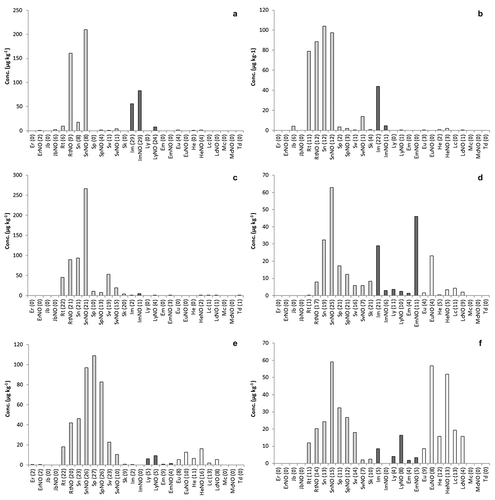
Figure 4. PA mean concentrations (µg kg−1) in relation to: (a) the type of production (traditional, organic) and type of packing (tea bag, loose); (b and c) the type of tea. Between brackets, the number of samples of a specific category.
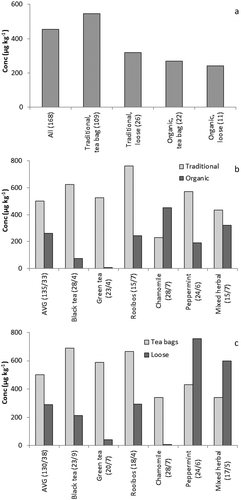
Figure 5. Mean concentrations of individual PAs in: (a) bee pollen supplements (n = 12), (b) St John’s wort supplements (n = 15), (c) supplements made from a single plant (n = 60), (d) supplements made from a mixture of plants (n = 18), (e) herbal teas made from PA-containing plants (n = 12), and (f) supplements based on PA-plant material (n = 18). The PAs are grouped into four categories: senecionine type (light grey), lycopsamine type (dark grey), heliotrine type (white), and monocrotaline type (black). Between brackets, the number of samples containing the PA.
